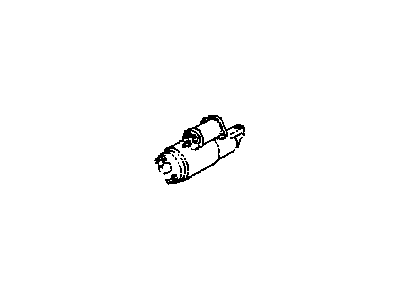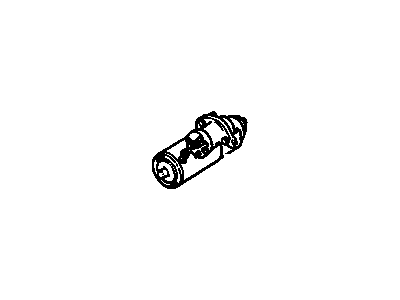
My Garage
My Account
Cart
Genuine Oldsmobile Omega Starter
Starter Ignition- Select Vehicle by Model
- Select Vehicle by VIN
Select Vehicle by Model
orMake
Model
Year
Select Vehicle by VIN
For the most accurate results, select vehicle by your VIN (Vehicle Identification Number).
4 Starters found
Oldsmobile Omega Starter Motor, Remanufactured
Part Number: 1988718$79.89 MSRP: $150.74You Save: $70.85 (47%)Ships in 1-3 Business Days
Oldsmobile Omega Starter
Laying particular emphasis on the engine starting system, it is expedient to underline that the Oldsmobile Omega is equipped with the starter which is a crucial component which is aimed at starting the vehicle's operation through the conversion of electrical energy supplied by the battery into mechanical energy. This process starts when the ignition key turns a starter solenoid this part is connected with the battery with thick wires. The solenoid, in turn, energizes the starter motor and just as with the starter drive gear, meshes with the engine's flywheel or flexplate ring gear to crank the engine. The Oldsmobile Omega starter adopts a gear reduction system that includes an armature with a reduction gear to mesh with the drive to effectate the needed turn on of the engine. This system is particularly efficient in the matters of the high torque required for the beginning of the operation of the engine, whereas an overrunning clutch disconnects the drive from the ring gear as soon as the engine starts to work in order to avoid damage. Years of production of the Oldsmobile Omega may have seen the car utilizing different kinds of starters but as for OE or original starters were used even for high compression engines. These starters are also rather powerful and can produce a large amount of torque, but, generally, they will not work with high-compression engines without some modifications. In the aspect of performance engine with close tolerance clearance the stock starter cannot stand the stress it is therefore recommended that aperformance built starter be acquired as this indicates that the starter must be chosen with reference to the requirements of the particular engine.
Each OEM Oldsmobile Omega Starter we offer is competitively priced and comes with the assurance of the manufacturer's warranty for the part. Furthermore, we guarantee the speedy delivery of your orders right to your doorstep. Our hassle-free return policy is also in place for your peace of mind.
Oldsmobile Omega Starter Parts Questions & Experts Answers
- Q: What are the possible causes and solutions for a starter motor that does not rotate on Oldsmobile Omega?A:Ensure that the speed selector lever is in 'N' or 'P' for automatic transaxle or that the clutch pedal is depressed for manual transaxle if the starter motor does not rotate when operated. Verify that the battery is charged and all cables, at both the battery and Starter Solenoid terminals, are secure. If the motor can be heard spinning but the engine isn't cranked, the overrunning clutch in the starter motor is likely slipping, requiring removal and dismantling. If the starter motor doesn't operate, but a loud 'click' is heard from the solenoid plunger, the fault lies in the main solenoid contacts or the starter motor itself. In cases where the solenoid plunger doesn't move, the solenoid may be defective or the solenoid circuit open. You can check the solenoid by connecting a jumper lead between the battery (+) and the 'S' terminal on the solenoid. If the starter motor operates, the fault lies in the ignition or neutral start switches or their interconnecting wiring. If it doesn't, the starter/solenoid assembly should be removed for testing and repair. If the engine cranks at an unusually slow speed, check the battery charge and terminal connections, oil grade, and ensure no mechanical fault within the power unit. Run the engine to normal operating temperature, disconnect the battery feed wire to the Distributor Cap to prevent engine firing during cranking, then connect a voltmeter positive lead to the starter motor terminal of the solenoid and the negative lead to ground. Ignite the switch, take the voltmeter readings once steady, but don't let the starter motor turn for more than 30 seconds at a time. A reading of 9 volts or more with normal cranking speed indicates a good condition, while the same voltage but slow cranking speed denotes a faulty motor. A reading of less than 9 volts with slow cranking speed suggests the solenoid contacts are likely at fault and should be replaced.















